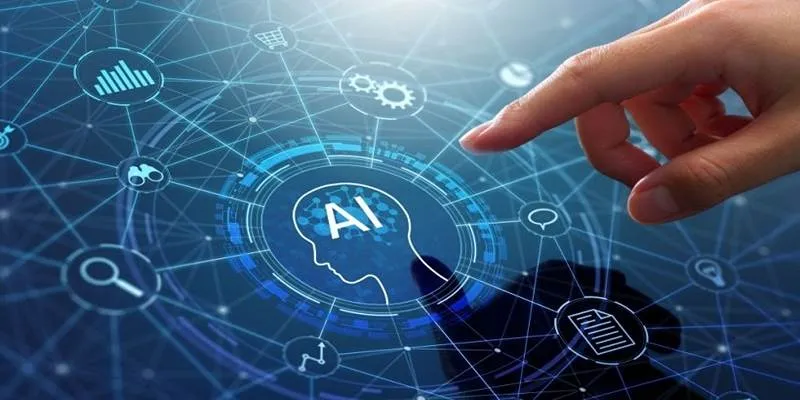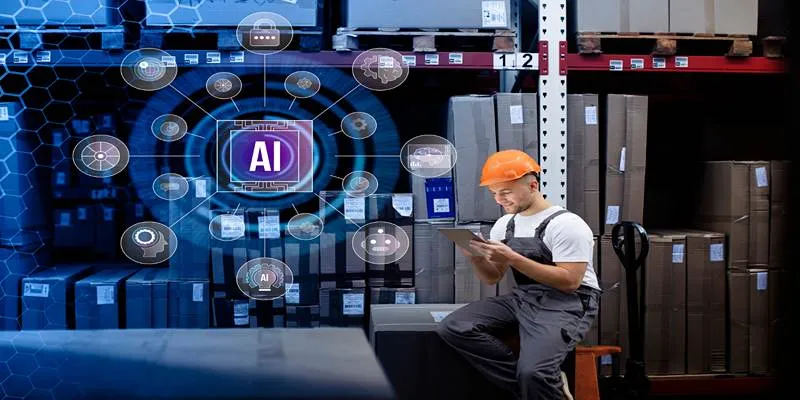At this year’s Mobile World Congress 2025 in Barcelona, Fujitsu captured attention by unveiling a potentially game-changing AI platform for public safety. The Japanese tech giant introduced an artificial intelligence system designed to predict crime by analyzing biometric and behavioral data in real-time. This isn’t just an upgrade to security cameras—it’s a whole new approach.
Fujitsu’s innovative system aims to detect potential criminal intent before any crime occurs. By combining AI-powered biometrics with advanced pattern recognition, it proposes a fresh take on urban safety—prompting discussions on ethics, accuracy, and privacy.
How Does Fujitsu’s Predictive System Work?
Fujitsu demonstrated a working prototype of its AI-powered biometrics platform at its pavilion, attracting many curious visitors. The system uses high-resolution cameras, thermal sensors, and biometric scanners, strategically placed in monitored areas. Unlike traditional surveillance, which analyzes incidents post-factum, this AI works in real-time.

The cameras capture facial expressions, micro-gestures, posture, gait, and even subtle physiological signals, such as heart rate or skin temperature changes. These inputs are fed into an AI model trained on millions of anonymized data points, seeking patterns linked to aggressive or suspicious behavior. Fujitsu claims the AI can identify individuals exhibiting signs of stress, concealed intent, or erratic movements, allowing human monitors to act before violence or theft can happen.
What sets this system apart from older predictive policing efforts is its detailed biometric inputs. It offers situational awareness down to individual actions, not just crime statistics. Fujitsu engineers explained that the system can integrate with existing CCTV infrastructure or function as a standalone solution, with cloud-based analytics providing updates to law enforcement or private security teams.
Applications and Demonstrations at MWC 2025
The demo at Mobile World Congress focused on crowded urban areas, stadiums, airports, and train stations, where quick incident management is crucial. Attendees watched as volunteers enacted scenarios like loitering or arguing. The system accurately flagged escalating behaviors before mock assaults or robberies occurred.
Fujitsu shared data from pilot programs in two Japanese cities and one European airport. These trials reportedly reduced pickpocketing and physical altercations by over 20% in monitored zones compared to control areas. The technology is also designed to identify individuals needing help, such as disoriented or fainting individuals, ensuring prompt staff intervention.
The company stresses that its goal is to supplement, not replace, human security personnel. Human judgment remains essential, as AI systems can misinterpret cultural differences or disabilities. Predictive tools are meant to enhance, not supplant, human decision-making.
Privacy Concerns and Ethical Questions
Fujitsu’s unveiling wasn’t without controversy. Concerns about privacy, bias, and accountability quickly arose. Many attendees were uneasy about constant monitoring for hidden misconduct, especially since the technology relies on collecting intimate biometric data. Privacy advocates highlighted misuse risks in authoritarian settings or against marginalized groups.

Fujitsu responded by emphasizing its commitment to transparency and data protection. Engineers stated that data is anonymized at the source where possible, with stringent security standards governing storage and access. The system doesn’t perform racial or gender profiling and is rigorously tested to minimize false positives, which could lead to unwarranted confrontations.
Legal scholars and ethicists at the event warned that current public surveillance regulations might not fully cover predictive biometrics capabilities. They called for public debate and updated legal frameworks before widespread adoption. Questions about data control, storage duration, and recourse for unfair flagging remain open.
The Broader Debate on Predictive Policing
The presentation at Mobile World Congress 2025 reignited discussions about predictive policing technologies. Previous models relied on crime statistics and geographic patterns. Fujitsu’s approach shifts focus to individual-level predictions.
Proponents argue that smarter surveillance can prevent crime, making cities safer. Critics fear a culture of suspicion, with everyone treated as potential threats. Studies of earlier models raised concerns about biases, especially against minorities. Fujitsu’s system offers hope for mitigating these issues, but skepticism persists.
Currently, the technology is in the pilot stage. Fujitsu is working with regulators, law enforcement, and civil society to refine protocols. The company hinted at more extensive trials later this year, potentially in North American and European cities.
Conclusion
Fujitsu’s AI-powered biometrics, showcased at Mobile World Congress 2025, present a bold vision for public safety through real-time biometric and behavioral data. Early trials show improved responses and fewer incidents, but the technology has sparked debates over privacy and fairness. Its future in urban security depends on technological evolution and societal consensus on balancing safety with personal freedoms.
 zfn9
zfn9























